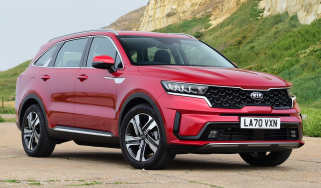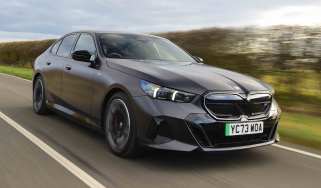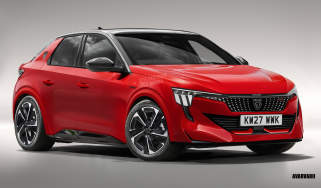Kia Niro - Engines, performance & drive
Designed with comfort in mind rather than driving fun, although the Niro EV has a decent turn of pace

The dynamics of the Kia Niro have been improved thanks mainly to the introduction of its K3 underpinnings. The platform is shared with Hyundai, and Kia’s parent company has claimed the architecture allows for better body control due to a lower centre of gravity. Whichever Niro you pick, it’ll feel much more stable and compliant in the bends than plenty of rivals.
In the corners, it’s fairly easy to reach the Niro’s limit, after which point you’ll find plenty of safe and manageable understeer. The steering is not particularly communicative, but it is accurate and has a reassuring weight, which inspires confidence through corners.
On top of this, the seats are surprisingly supportive, with plenty of side bolstering to keep you in place.
Due to the additional weight of its batteries, the Niro EV doesn’t feel quite as nimble as its hybrid sibling and is a bit more fidgety over ruts and bumps in the road. The hybrid feels more settled and allows for smooth progress on most roads, where there’s little difference in comfort between the lower spec 16-inch wheels and the 18-inch wheels that come as standard on top-spec 4 models. Wind noise and tyre roar are kept to a minimum, even at motorway speeds.
More reviews
Car group tests
- BYD Atto 3 vs Kia Niro EV 3: 2023 twin test review
- MG4 vs Kia Niro EV: 2022 twin test review
- Kia Niro vs Nissan Juke: 2022 twin test review
In-depth reviews
Long-term tests
Road tests
Used car tests
Two driving modes are available for the hybrids: ‘Eco’ and ‘Sport’. Credit to Kia, there’s a noticeable difference between the two on the move. In Eco mode, throttle response is slowed and gear changes happen earlier to provide more efficiency. In Sport, the throttle response is sharpened, and the Niro is keener to hold onto gears. Both have plenty of flexibility, however, so you don’t end up chopping between the two that often.
The Niro’s brakes don’t offer that much feel, and you have to press them quite hard to garner some stopping power at higher speeds. They work better at slower speeds around town and are easy to modulate for a smooth stop.
The six-speed dual-clutch automatic transmission in the hybrids can be a bit slow to change gear at times, and kicks down sharply if you floor the accelerator before sending the revs skyward, but it does a good job of providing seamless shifts the rest of the time. The manual override paddles in the PHEV are best left alone because they can be painfully slow to intervene. If you put your foot down in either hybrid, the engine noise can sound a bit gruff at first, but this dies down once up to cruising speed.
We wouldn’t go as far as to call the Niro fun. It’s still a small SUV designed for comfort and practicality over driving thrills, but it’s easy to develop confidence from behind the wheel. The Niro does well in tricking you into thinking it's a smaller car, and it’s easy to develop confidence from behind the wheel.
|
Model |
Power |
0-62mph |
Top speed |
|
Niro 1.6 HEV ‘2’ |
125bhp |
11.3 sec |
99mph |
|
Niro 1.6 PHEV ‘2’ |
168bhp |
9.6 sec |
104mph |
|
Niro EV |
198bhp |
7.8 sec |
103mph |
0-62mph acceleration and top speed
The Niro Hybrid comes with a 1.6-litre four-cylinder petrol engine mated to a 1.32kWh battery and one electric motor. When combined, they are good for 127bhp and 265Nm of torque. With power being sent to the front wheels only (as with all Niros), the Hybrid model manages the 0-62mph sprint in 11.3 seconds and goes on to a top speed of 99mph.
With less low-down power than the plug-in hybrid or electric Niros, the base hybrid isn’t as adept at swift overtakes or punchy acceleration when merging with motorway traffic, so it’s at its best when it’s not being hustled and you’re just pottering around town.
The Niro PHEV features the same petrol engine, except it comes with an 11.1kWh battery. The plug-in hybrid produces 168bhp and 265Nm of torque, which gives it a 0-62mph time of 9.6 seconds and a top speed of 104mph.
The fastest Niro by far is the EV, thanks to its 201bhp electric motor, which can propel from 0-62mph in 7.8 seconds and reach a 103mph top speed.










